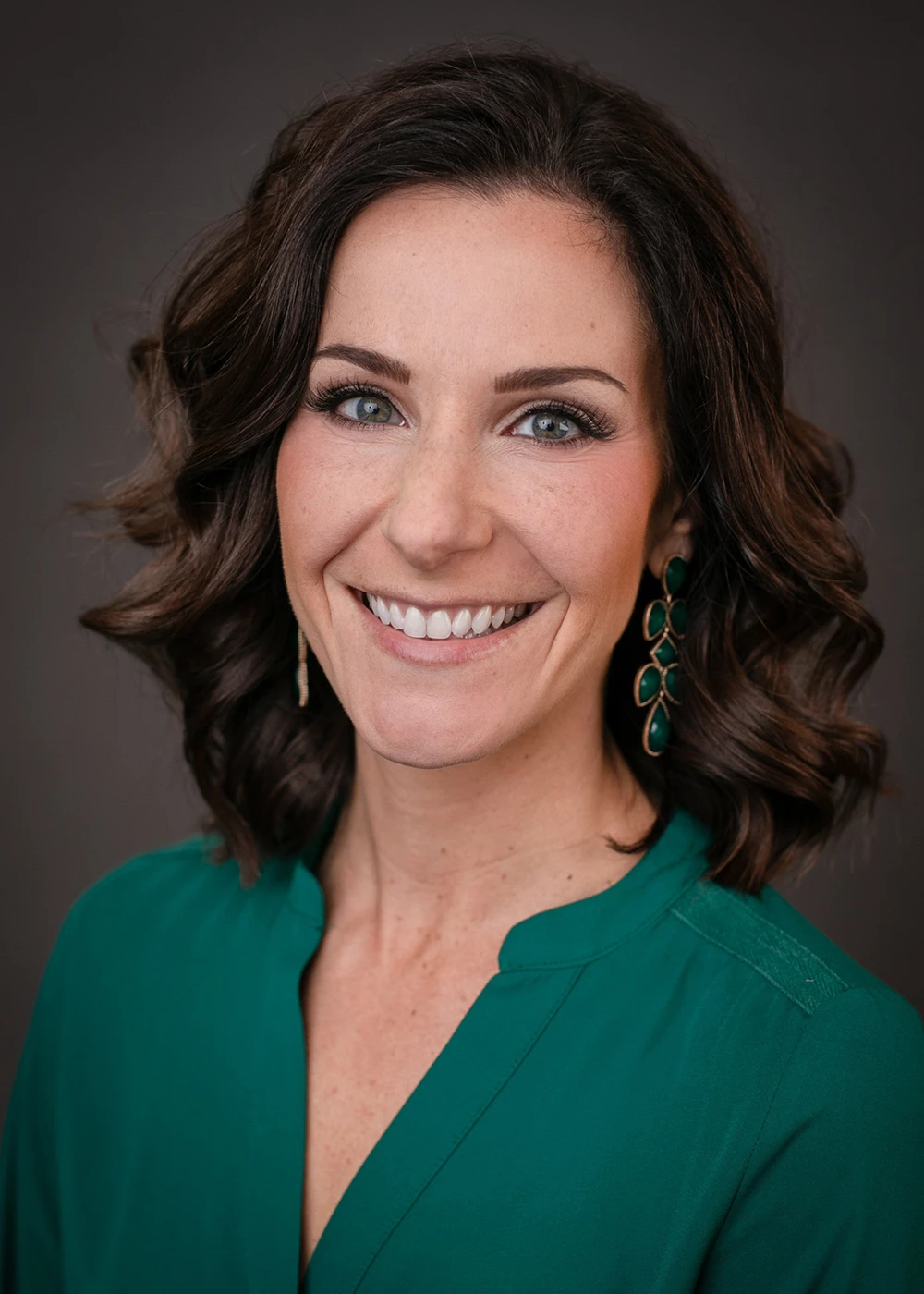




The Meaning of Care Magazine
Together Reconstructing What Cancer Took Away
Published: July 22, 2019
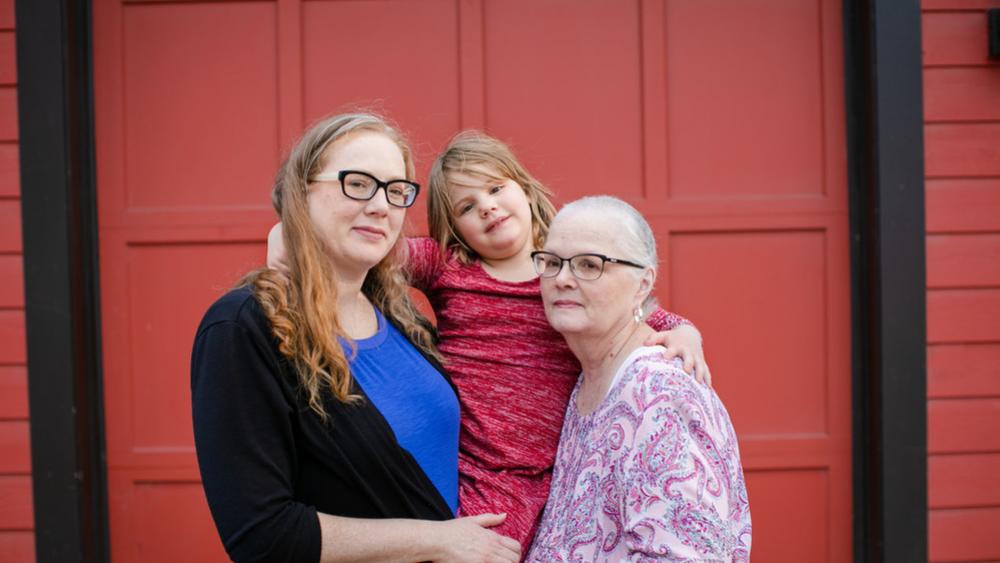
Amanda Nelson, 40, had planned to be there one day, but as a means of preventing cancer – not treating it.
As her surgical team removed both breasts, her plastic surgeon stood by. Katie Honz, MD, with Methodist Physicians Clinic 192Dodge, was about to begin rebuilding a part of Amanda’s body that made her feel complete.
A Proactive Attempt
Amanda shares more than just a home with her mother, Terry, and 5-year-old daughter, Sawyer. The trio share a bond strengthened by disease.

Their story starts with a BRCA gene test. Amanda knew of a strong breast cancer history on her father’s side and wanted to know her risk.
She tested positive for a BRCA2 mutation in 2017, meaning she had about a 69% chance of developing breast cancer. She had to do something.
“A double mastectomy,” she said confidently. “Just to avoid that diagnosis.”

“This whole time I assumed it was coming from my dad’s side,” Amanda said. “You could not have convinced me otherwise.”
Terry opted for a double mastectomy and breast reconstruction – a precursor to something she and her daughter never saw coming.
Eight months after her mother’s diagnosis, Amanda received the same. A tumor was discovered in her right breast following an MRI. A biopsy confirmed it was cancer.
“I just blanked out,” Amanda said. “The whole world just stopped for a minute.”
The procedure she wanted was now the procedure she needed.
Reconstructive Surgery
It was cool and cloudy on the day of Amanda’s surgery, but the entire operating room staff lit up when her pathology results were announced. Amanda’s sentinel lymph nodes, which were removed for testing, showed no signs of cancer. No further testing was needed, and Dr. Honz – the surgeon who performed Terry’s reconstruction just weeks prior – was cleared to begin.
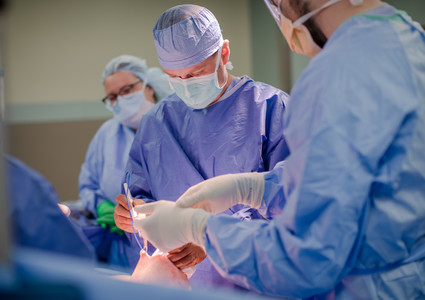
Staff removed the surgical instrument table that Methodist surgeons Paul Kolkman, MD, and Jeffrey Carson, MD, worked from to perform Amanda’s double mastectomy. A new table, with sterile instruments and supplies, was brought forth to avoid the transfer of any potentially cancerous cells back to Amanda’s body.
Dr. Honz began irrigating Amanda’s chest cavities with three types of antibiotics – the same solution Amanda’s round-shaped tissue expanders were packaged in. Those expanders, or temporary inflatable pockets, are needed to stretch the breast tissue in preparation for implants.

Before inserting the expanders into Amanda’s chest, Dr. Honz wrapped them in processed tissue derived from cadaver skin. According to Dr. Honz, “it’s one of the biggest innovations in breast reconstruction.”
This type of tissue not only helps with a less painful recovery but also provides more support for the expander and, in the end, helps create a more natural-looking breast.
Once in place, Amanda’s expanders were filled with air. Lighter than saline, air puts less pressure on the incision initially, which leads to a smoother healing process.
“That air will slowly leak out and eventually be replaced with saline,” Dr. Honz explained. “But it helps the patient mentally to wake up to a little volume, as opposed to waking up completely flat.”
Fluorescence imaging then allowed Dr. Honz to assess blood flow after indocyanine green dye was injected into Amanda’s body. Her blood vessels – illuminated by the dye – were displayed on a screen, showing Dr. Honz that her patient’s tissue was healthy enough to continue reconstruction.
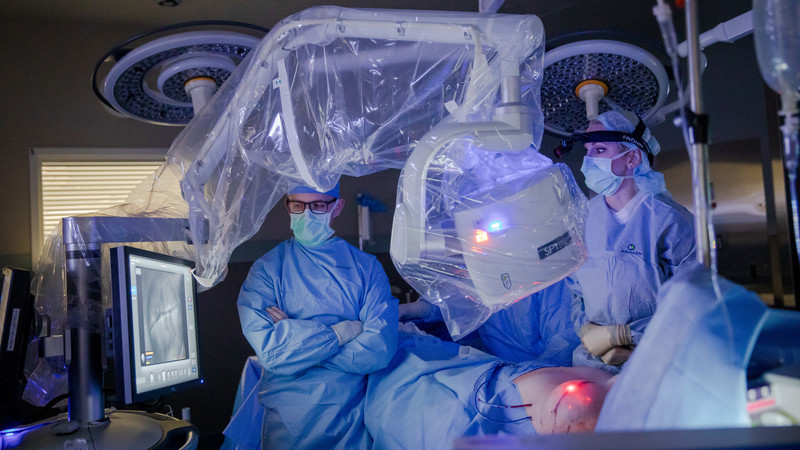
She perfected the look of Amanda’s chest by trimming a small amount of skin before suturing her incisions. The surgeon’s mouth was covered by a mask, but her eyes seemed to smile. The procedure had gone flawlessly.

“She’s a Doctor First”
Choosing Dr. Honz as her reconstructive surgeon was easy for Amanda. She saw firsthand the type of time and attention the physician gives her patients at one of her mother’s follow-up appointments.

Amanda recalled the urgency that Dr. Honz led the appointment with: “Right away Dr. Honz said, ‘You’re not feeling well. You need to go to the ER. This is not right. The way you’re acting is not OK.’”
Dr. Honz feared that Terry was suffering from a blood clot.
“We ended up getting a wheelchair,” Dr. Honz said. “I said, ‘I don’t even want you walking down there. We’re going to take you there right now.’”
Terry did indeed have a blood clot – a saddle embolism.
“The clot was teetering between both sides of the pulmonary arteries,” Dr. Honz added. “That can be something that immediately kills somebody.”
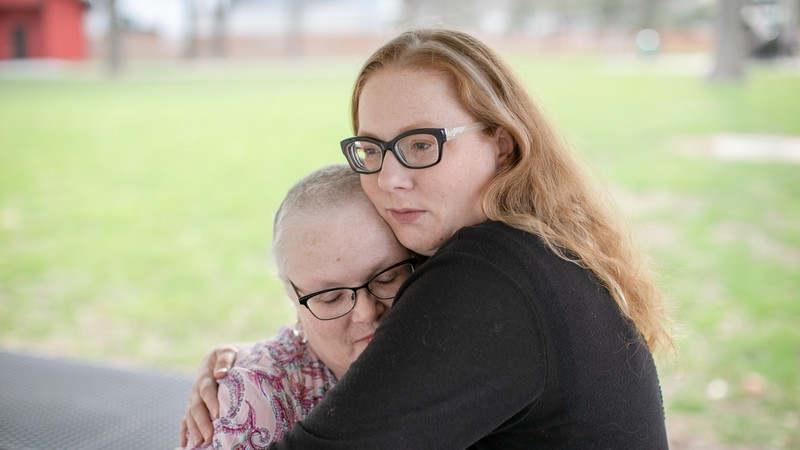
As Terry reminded her daughter, though, Dr. Honz is “a doctor first.”
“It’s true,” Dr. Honz said. “You have to make sure you’re taking care of the person and not just the surgery. There's a reason we go through as much training as we do.”

Not for Everyone
As she awaits her permanent implants, Amanda still believes that for her, “reconstruction was a no-brainer.”
“I like how my body looks with breasts,” she said. “I honestly feel like I would have to figure out who I am again without them.”
It’s a big part of why Dr. Honz became a plastic and reconstructive surgeon.
“You can make a big difference in someone’s recovery,” she said. “I may not be treating the cancer, but I’m definitely treating the patient and their emotional well-being.”

“It’s one more aspect of our Meaning of Care,” Fuchs said. “We want to offer whatever enhances the patient’s quality of life.”
For Angie Heinold, 47, whose cancer diagnosis led to a single mastectomy, a custom 3D prosthesis was the answer.
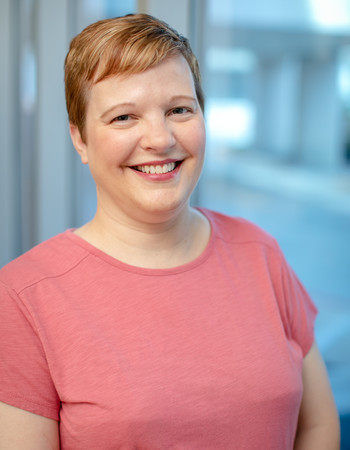
With more than 30 different skin tone options, Angie was able to choose one that closely matches hers. She even chose to include a nipple that was similar to her other in size, color and projection.
“The feel of it – the actual technology of it is unmatched,” Fuchs said. “It’s lightweight, it wicks away moisture, and it fits into any bra.”
A standard prosthesis requires a special pocketed bra and doesn’t always fit in and around the concavities and tissue mounds often left after surgery. Because of this, some patients struggle with symmetry issues or an unnatural looking chest.

“So after that scan and a lot of chest markings, the patient is left with a breast that will literally fit into that chest wall like a puzzle piece.”
A puzzle piece that gave Angie peace of mind – knowing she didn’t need reconstruction to look and feel like herself again.
“I just didn’t want to deal with the pain and the saline fills on top of my treatment,” she
said. “At the end of the day, it was just a breast, and I had more important things I was fighting for. I was fighting for my life. I was fighting for the chance to see my daughter grow up.”

A different story than Amanda’s, no doubt, but proof that while many breast cancer survivors will choose different paths, most of them want the same thing in the end: to feel whole and continue living a life with purpose.
“I want to show my daughter that we can do hard things,” Amanda said, “and that we don’t give up. We do not give up. You work through your issues, you face them head on, and you ask for help when you need it. Most importantly? You find your tribe. And dang it, you keep them with you.”

Photos and video by: Daniel Johnson
More Resources
- Learn more about cosmetic, plastic and reconstructive surgery at Methodist
- Read how tissue donation has helped make breast reconstruction possible
- Read more from the Summer 2019 issue of The Meaning of Care Magazine

